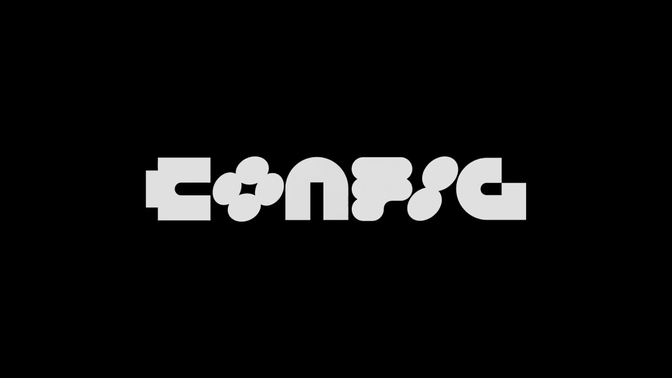
Design feedback loops: the secret to faster, smarter, more confident teams

Every designer knows the tension between creativity and certainty. Designers pour hours into crafting an interface that feels seamless only to find out, post-launch, that users navigate it differently than expected.
Another design expectation missed, another round of rework.
This cycle happens because feedback often arrives too late. Traditional design review processes tend to rely on internal opinions or post-release data, leaving teams reactive instead of proactive.
Design feedback loops change that. By integrating real user feedback throughout the design iteration process, teams can make faster, smarter decisions. Feedback stops being a bottleneck and becomes a catalyst for innovation.
Here are 4 reasons you need feedback loops in the design process.
1. Turns inconsistent feedback into consistent progress
Designers don't just design, they build systems that are a strategic revenue driver. According to a study by Mckinsey, companies with top design scores achieved 32% faster revenue growth and 56% higher total returns to shareholders compared to typical companies.
Designers also manage expectations from product, engineering, and stakeholders while ensuring every design decision reflects real user behavior. Yet, many still operate on delayed or incomplete insights.
Here are some of the pain points of today’s designers:
- Inconsistent brand experiences across platforms.
- Conflicting stakeholder opinions on what “good” design looks like.
- Complex workflows that prioritize speed over usability.
A continuous feedback loop solves these challenges by creating a shared understanding of what works and what doesn’t. It transforms subjective debates into objective learning.
Instead of relying on assumption-driven cycles, teams using platforms like UserTesting can observe how real users interact with prototypes, features, or flows before they’re finalized.
Pre-launch user validation testing is key here, where teams observe how real users interact with design before they go to market. This saves weeks of rework and thousands of dollars in redesign costs. With early testing, organizations can cut iteration cycles by 25% and avoid rework that could cost millions.
Feedback isn’t just validation, it’s acceleration.
GUIDE
How to enhance design efficiency through continuous user feedback
2. Removes guesswork from design iteration
Design iteration works best when it’s informed by evidence. Continuous testing transforms your design review process into a living system of refinement.
Here’s how leading design teams apply it:
- Prototype testing early and often: Instead of waiting for polished designs, test wireframes and low-fidelity prototypes to spot friction fast.
- Data-backed design decisions: Use qualitative insights—think real user reactions, comments, and behaviors—alongside analytics for a complete view of user experience.
- Cross-functional collaboration: Feedback loops make design discussions more inclusive. Product managers and engineers can observe the same insights, reducing friction and aligning priorities faster.
- Reduced rework and faster releases: With continuous validation, fewer design elements need to be rebuilt later. Teams stay focused on forward momentum.
Watch this video to see how you can use UserTesting within Figma.

A structured, repeatable feedback system turns every design iteration into a learning cycle. Designers move faster because they’re designing with confidence, not guessing in the dark.
3. Makes agile teams smarter with every release
The agile design process thrives on adaptability. But without feedback, agility can still lead to blind spots. Moving beyond traditional data and internal priorities, a culture of continuous testing ensures teams respond to real user needs driven by actual human feedback.
To embed this mindset:
- Make feedback a shared ritual: Treat usability testing and user validation as a standing part of every sprint, just like retrospectives.
- Close the loop: Document insights, decisions, and design changes to ensure that learnings from one project inform the next.
- Empower everyone to test: Great feedback doesn’t need to wait for research teams. Designers, PMs, and engineers can all run quick user tests with tools like UserTesting.
- Celebrate feedback-driven wins: Highlight moments where insights directly improved usability or business outcomes to reinforce the habit.
The result? Design teams that move faster, deliver consistent experiences, and align creativity with customer reality.
4. Align stakeholders with a single source of truth
When multiple stakeholders weigh in on a design, decisions can easily spiral into opinion battles. Feedback loops resolve this by anchoring every conversation in evidence.
Design leaders can use structured feedback data such as task completion rates, heatmap visualizations, and usability benchmarks to support design rationale during reviews. This technical evidence transforms creative discussions into measurable outcomes.
Rather than defending aesthetics, designers can demonstrate functional success tied to real user behavior metrics. Over time, this builds trust and reduces friction between teams, turning the design review process into a transparent, data-driven dialogue.
The bottom line: feedback loops turn design into a system of learning
Design feedback loops are more than checkpoints; they are engines of improvement. By embedding continuous feedback into every stage of the design iteration and agile design process, teams transform design from a creative exercise into a measurable system of learning.
For design leaders, this means fewer revisions and products that reflect real user intent. For organizations, it means less waste and more velocity. And for customers, it means experiences that feel seamless and human.
Key takeaways
- Continuous feedback loops enable faster, smarter design iteration.
- Integrating user input early reduces rework by up to 25%.
- Feedback transforms the design review process from subjective to data-informed.
- A feedback-first culture drives alignment across design, product, and engineering.
- Tools like UserTesting make it easy to validate ideas early and often.
FAQ
Q: What is a design feedback loop?
A: A design feedback loop is a process where user and team feedback is continuously gathered, reviewed, and implemented throughout design stages—from concept to post-launch.
Q: How does feedback speed up design iteration?
A: By testing early and often, teams can identify usability issues before they become expensive to fix, reducing rework and keeping the project on schedule.
Q: Isn’t feedback just another layer of process?
A: Not when it’s continuous. The right tools automate and streamline testing, making feedback fast and frictionless—not bureaucratic.
Q: What role does UserTesting play in this process?
A: UserTesting provides on-demand access to real user feedback, helping teams validate design decisions at every stage and confidently move from idea to impact.
ON-Demand Webinar





